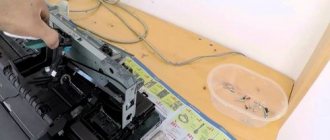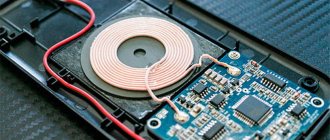Pen-type batteries are called AA batteries, mini-pen batteries are called AAA batteries. According to their chemical composition, they are nickel-metal hydride (NiMH), nickel-cadmium (NiCd), lithium-ion (Li-ion, their most popular standard size is 18650). The best batteries are not those that have exorbitant capacities listed on them. The real characteristics of such “record holders” are much more modest - they quickly lose their charge and soon become unusable.
Good batteries have low self-discharge, which is reflected in the marking with the designation LSD - Low Self Discharge. Over the course of a year, they are discharged by only 5–10%. Another advantage of LSD batteries is the ability to quickly recharge with high currents, without heating and the risk of failure. Such batteries are adapted to powerful loads and are capable of delivering high discharge currents. In particular, they last longer in cameras and cameras.
Nickel-based pen batteries have a memory effect - the property of losing capacity due to incomplete charge. It manifests itself in the fact that when incompletely discharged and then recharged using a conventional charger (not a “smart” one), the batteries quickly lose capacity and fail. To use them effectively, they need to be completely discharged before charging, which in practice is not always possible or convenient. This problem can be solved by restoring AA batteries using a “smart” charger.
How to restore a AA battery at home
Intelligent charging allows you to restore AA batteries at home or even on the road by connecting the charger to any USB connector. The essence of this recovery is to train the batteries - the charger conducts discharge-charge cycles, comparing the capacity after each cycle. This training is carried out by a “smart” charger until the increase in capacity stops.
Let us list the characteristic features of “smart” chargers:
- wide slot bays;
- automatic recognition of battery types;
- springy contacts that adapt to the length of the batteries;
- special charging algorithms that can “revive” failed batteries, provided that they are not damaged.
But even when using smart chargers, problems are not excluded. If the charger is not equipped with a voltage stabilizer, it can “burn” the batteries. Many chargers do not reflect the remaining time until the end of the charging process. Voltage-sensitive nickel-metal hydride batteries should not be charged at high currents. To protect them from overheating, use a current of no more than 0.5 A.
Causes of battery problems
Restoring energy capacity is a real procedure, but before you do it, you need to understand how the phone battery generally works and why it is depleted. New batteries for smartphones and tablets use a substance such as lithium - this is one of the lightest metals on the planet. It is placed in a special electrolyte between two metal electrodes. Lithium ions move in the acid solution - this is how the gadget receives electricity after charging. But lithium molecules do not last forever: over time, they break down and turn into “useless” chemical reactions.
When lithium stops “working” and the battery begins to lose charge, this process is called power source degradation. This is common to all lithium-ion batteries. On average, “survivability” is 400–500 charge-discharge cycles, which is 3–5 years of service. At the same time, every year 10–20% of the original capacity is lost. When the resource is completely exhausted, you will have to take a new battery.
Battery life can be extended by:
Airplane mode activation.
- "smart" charging. There is no need to wait until the battery reaches 0. It is better to charge the phone when it shows 35 - 50%. It is not recommended to overcharge the power source, which occurs when the smartphone is plugged into an outlet and left overnight. The battery will charge faster, and the rest of the time it will be “overloaded,” which is clearly not useful;
- adhering to optimal operating temperatures. Batteries do not like heat or cold - they begin to lose capacity even faster;
- from time to time turning on the “Airplane” mode. With it, the power source simply rests.
However, there are methods to restore your phone battery even if it is completely dead.
Xtar smart chargers
Let's look at the algorithm for restoring finger batteries using the example of using Xtar charging stations. These are models VC2, VC4 and VP4. They are equipped with multi-level battery protection and a smart display that shows:
- level of battery wear;
- achieved capacity;
- voltage;
- charge current strength on each channel;
- remaining charging time;
- actual capacity of each battery.
If you insert batteries with the polarities reversed, the charging station will not accept them, and information about the need to change the poles will appear on the screen. The end of the charging process is indicated by the LED changing from red to green.
When you can't restore your battery
The measures described are temporary. For some time they will “bring back to life” an old battery or one that has lost the ability to hold a charge. If the battery is no longer worth anything, and you can’t charge it, the only way out is to buy a new one.
“Resuscitation” is not recommended for swollen and deformed power supplies. If such a battery bursts, it will flood the phone with electrolyte, and it will also deteriorate. Restoring a battery is a serious, responsible job that requires compliance with rules and safety precautions.
Functionality of Xtar VC2, VC4 charging stations
The table shows a comparison of Xtar VC2 and VC4 smart chargers:
| Criterion for comparison | VC2 | VC4 |
| Purpose | Recharging lithium batteries of different sizes. | Recharges batteries of various types (Li-ion, NiMH, NiCd), except for rare lithium-polymer models. Recharging from sockets and USB. |
| Number of channels | 2 with current output of 0.5 A | 4 channels at 0.5 A |
| Functional | Automatically detects battery needs for recharging. Automatic power supply shutdown at the end of the recovery process. | Suitable for simultaneous charging of 4 0.5 A batteries or 2 1 A batteries in the outer slots (leaving the central channels empty). |
How does a telephone battery work?
Most gadgets have a battery function. There are several types of batteries for phones:
- Ni-Cd – nickel-cadmium;
- Ni-Mh – nickel metal hydride;
- Li-Ion – lithium-ion.
NiCd batteries have the largest charge capacity; they are easy to manufacture, store and operate. Often used to power medical equipment, radios, high-power instruments and professional video cameras. NiMh batteries generate more heat during charging, requiring the use of a complex algorithm to determine full charge. For this reason, most of these batteries have an internal temperature sensor. NiMh takes a long time to charge (it takes twice as long to replenish the NiCd charge), but their capacity is much greater.
Li-Ion batteries, when recalculated per kilogram of weight, are 2 times higher than NiCd. For this reason, lithium-ion batteries are now used in all phones and laptops, where in addition to battery life, the weight of the product is also important. The design of the battery itself is very simple: two graphite sheets of lithium and cobalt oxide, which are lubricated with electrolyte and rolled into a roll.
Why is the battery draining?
After a year or a year and a half, smartphone owners begin to notice a decrease in the performance of the device; the charge quickly runs out. This can happen for several reasons, some of them can be solved programmatically (disabling unnecessary functions, wi-fi, cleaning viruses), while others can only be technically corrected by restoring the battery capacity. The following factors are popular reasons why the battery drains.
- Increased load on the device
The vast majority of smartphones run on the Android operating system, which, due to its complexity and open source code, is prone to failures; optimization of the OS is at a low level. Several dozen programs run automatically in the background; even in standby mode (with the screen off), they continue to “eat up” the charge and lead to a rapid decrease in battery capacity. Many of these background programs are not needed by the average user and should be disabled.
- Viruses
The Android system is free, which is why it has become so popular, hackers could not ignore this and began to create malicious programs for it. The activity of such viruses leads to a rapid decrease in the phone’s battery charge. In addition, the performance of smartphones drops even with strong processors. The following signs (except for antiviruses) will help determine the presence of “pests”: the appearance of advertisements in the wrong places, an increase in the temperature of the gadget’s body, and system slowdown.
- Defective battery
Battery failure leads to rapid loss of energy. This occurs more often with prolonged use, usually after two years. This is an inevitable process of consuming equipment resources. Sometimes a decrease in the nominal capacity of a battery occurs due to contamination of the anode and cathode. This leads to a slowdown in physical and chemical processes that affect the battery’s ability to release the accumulated charge. Using some methods, you can achieve the original battery value.
Battery capacity and expiration date
Recovery processes with constant use of the device will not be able to return one hundred percent to the same amount of voltage. Over time, the battery's power decreases, it wears out and becomes unusable. Li-Ion batteries have a shelf life of 2 years from the date of manufacture. During this period of time, from 20% to 35% of their power is lost. Restoring an old battery is not an easy task, so pay attention to the manufacturing date of the phone.
Charging and restoration of Li-ion batteries
Li-ion batteries have a much less pronounced memory effect than nickel-based batteries. Ideally, they should also be fully charged, but there is no need to wait until they are completely discharged before recharging. The optimal charge level for storing lithium-ion cells is 50–70%. New batteries leave factories with such a level of recharging that protects them from a critical decrease in capacity during storage and allows them to be used normally in the future.
Manufacturers of Li-ion batteries recommend that after purchase, discharge them several times to 10% (but this does not mean that you need to run them to zero!) and charge them to 100%. Such pumping after purchase increases the accuracy of the battery charge display. In the future, it is recommended to carry it out once every 3 months to increase the accuracy of reading the charge level.
If you constantly charge the battery from a weakly discharged state, its charge level will begin to be displayed incorrectly. But complete discharging is also harmful for power supplies - it reduces the capacity and duration of the battery between recharges. It is advisable to recharge batteries with a residual charge of 10–20%.
But if you choose between 5% and 30% residual charge levels, then it is better to charge the batteries in advance, at 30% or even 40% charge, to avoid deep discharge. This will help significantly extend the service life of the cells. It is recommended to store lithium-ion batteries in a partially charged state. Cells charged to 40–50% can be stored at temperatures of about 15 °C for a year without loss of capacity.
Restoring salt batteries
In this video I will share my method of restoring salt AA batteries. To do this, we need the batteries themselves, electrical tape, a marker, scissors, a testing device, a syringe and a working solution. First, let's check for functionality. As you can see, they are generally dead. Let's see what the device shows. We take them out and start restoring their operation.
DIY electronics in a Chinese store.
Important information. Only salt batteries are suitable for this experiment. They must be intact on the outside, there should be no leaks or discharge. Batteries of other types, that is, alkaline, alkaline or rechargeable, are not suitable for this method. This is dangerous to your health. So, we take a salt battery, find the connecting seam and make 4 marks at an angle of 90 degrees to the seam at a distance of 1 centimeter from the edge. In these places we make holes with a 4mm drill. We drill very carefully so as not to damage the shell, we drill only the outer shell, no more.
After making holes for the batteries, place them in one container with the plus side on top. Fill with working solution so that the level covers the top drilling. We use 6 percent food grade vinegar as a solution. Fill it out carefully. Leave the batteries in this state for 10-15 minutes. The temperature of the solution should be room temperature. We wait 15 minutes and proceed further. After the batteries have been soaked in the solution, carefully lay them out and place them to dry, seam side down, so that the excess is absorbed onto a napkin. Leave in this state for 10 minutes. Next, cover the hole with regular electrical tape.
The final stage of our charge restoration experiment has arrived. We check with the device. We insert them into the flashlight and try to turn it on. The light is on. The experience was a success. Let me remind you that this method of extending operation is only suitable for salt batteries.
Here is a powerful method from another author.
How to solder AA batteries
To connect cells into a battery, production does not use soldering, but spot welding. If this is not possible, you can use a soldering iron with a power of up to 25 W. But they need to act briefly, no more than 3 seconds, to prevent the cells from overheating.
Before soldering, you need to thoroughly clean the terminals and wires with a sharp knife or medical scalpel and fine sandpaper. Then the surface, cleared of plaque, must be treated with flux and the contact area must be soldered with quick touches. The solder should be low-melting, rosin-based flux is suitable.
Read our previous article about how to make a battery from lithium-ion batteries with your own hands without mistakes.
Basic recovery methods
There are quite a few recovery methods, but if your phone is more than one year old, none of them will bring long-term results. Malfunctions can be divided into two main categories:
- Physical aging of the device and loss of battery capacity.
- “Deep discharge” of the smartphone, making it impossible to use the standard charging adapter due to insufficient voltage on the controller.
Modern lithium batteries cannot be refurbished in the same way as older alkaline batteries. If the battery has already expired and has seriously lost capacity, it is recommended to replace it with a new one. Below is how to restore a completely dead phone battery.
Important! All methods give only short-term positive results, and the best solution in most cases is to purchase a new module.
How to extend the life of your iPhone or Android battery
Modern gadgets are equipped with large screens, which quickly “eat up” battery power. But the fact that their batteries drain so quickly is not the fault of the display, but of running applications that load the processor. There are 2 options to keep your gadget working as long as possible.
- Through the menu, disable applications that are currently unnecessary, without having to use the Internet. At the same time, you can extend the performance of your smartphone by more than a third of the time.
- If you are planning a long-term trip to nature, it is better to take care of a device such as a Power Bank in advance. Such high-capacity external batteries will allow you to fully charge your smartphone several times in the absence of an electrical outlet. Another option for extending the life of your phone battery is mobile solar panels. Today, the manufacturer offers similar equipment in the form of small handbags. There is a battery inside, and on the side walls there are photocells that convert solar energy into electricity.
Is it possible to charge a coin cell battery?
Small, flat (round) batteries have the same principle of generating electricity as in large products. A chemical reaction takes place inside the metal case, which will stop sooner or later.
Being a battery
Rechargeable tablet batteries for wrist watches can be used repeatedly. Such products are charged quite quickly using special devices, and if you purchase several identical batteries, you can always have a fully charged battery on hand.
If a miniature battery is used as a backup source of electricity to save data in the memory of a device (motherboards, car radios, etc.), then it can be charged from the built-in internal memory. This approach allows you to avoid resetting settings during operation.
Non-battery
If the battery is not a battery, then attempting to restore it is not a safe undertaking. Given the small size of the body of such a product, it is impossible to display information about the impossibility of charging, but manufacturers may indicate it on the packaging.
Battery life
How to extend battery life? We extend the work in a simple way - periodic use. If you use an alkaline battery for an hour or two, and then give it time to “rest,” the amount of energy released will be 30-50% more. By having a spare set and swapping them, you can achieve the service life of two sets that would normally be achieved by three such sets.
For this property, Alkaline batteries are sometimes called self-healing. The chemical reaction in batteries is irreversible and self-healing is impossible. It will not be possible to restore such a cell to its initial charge level, but you can significantly extend the life of the batteries.
Option number 2: what to do if the electrolyte in the power cell is dry
It is believed that expired batteries can only be disposed of, but this is not the case. It's worth trying to restore their functionality. You can find many tips on how to extend the life of batteries that are dry, but the best one is the following.
You need to make a hole on the side, closer to the edge. Vinegar or even plain water is pumped into it using a syringe. After the liquid stops being absorbed, the hole is covered. For this you can use simple plasticine. All you have to do is leave the battery for half an hour, after which it can be used.
Option No. 1: simple steps to revive a galvanic cell
It’s worth figuring out how to extend the life of batteries by restoring their charge for a short period of time (one or two days). This can be achieved by heating the galvanic cell or tapping its body with some object. From what you might have on hand on the road, a metal spoon is best.
Most often, this method leads to complete failure of the power supply element. This happens if you overdo it when hitting the battery and damage the central graphite rod. Also, do not bite the element body with your teeth. With such a “restoration” the battery will not last more than an hour. In general, in such cases, any, even the slightest, deformation of the outer glass is undesirable.
You can learn about another method from the video below.











